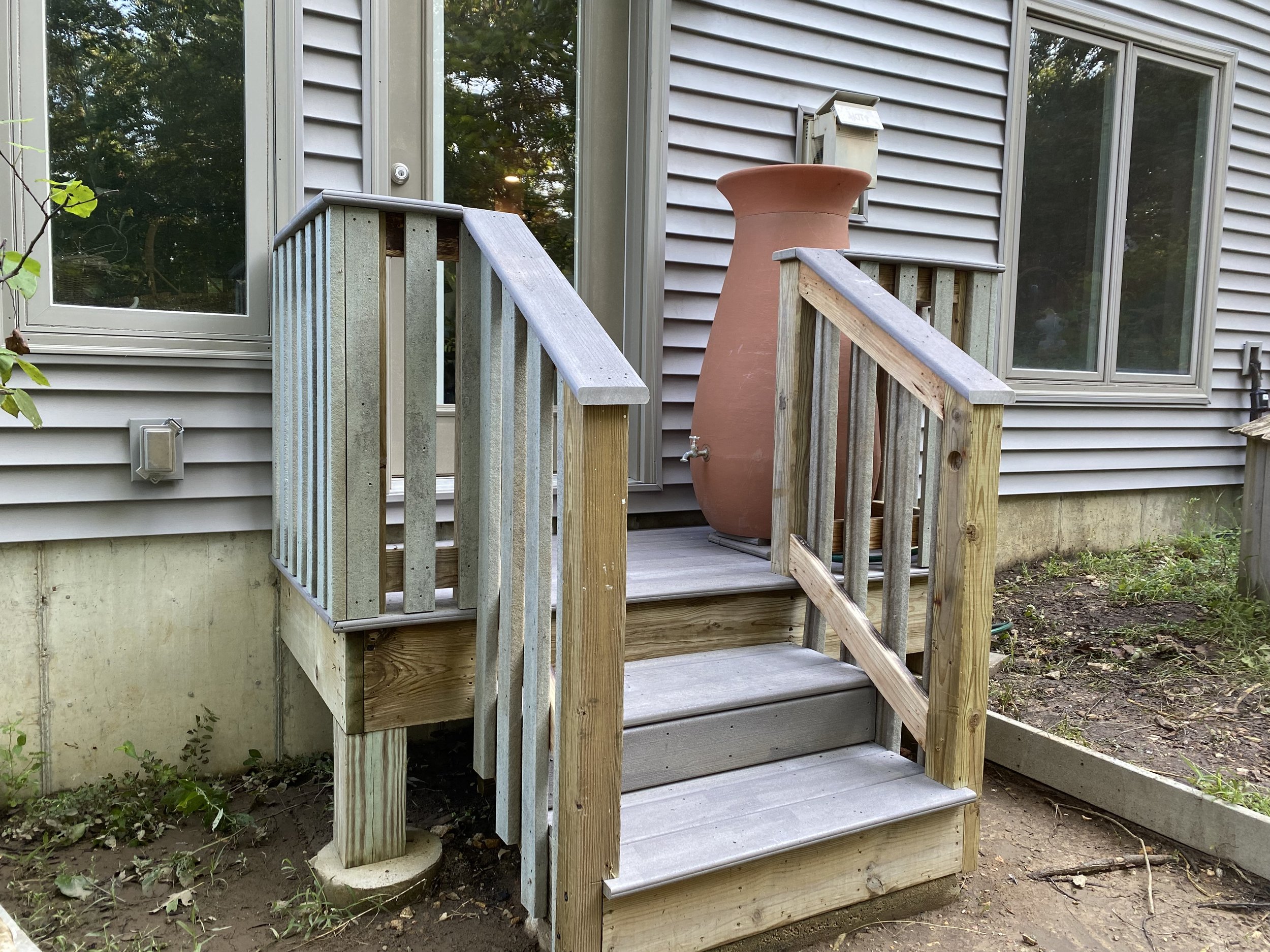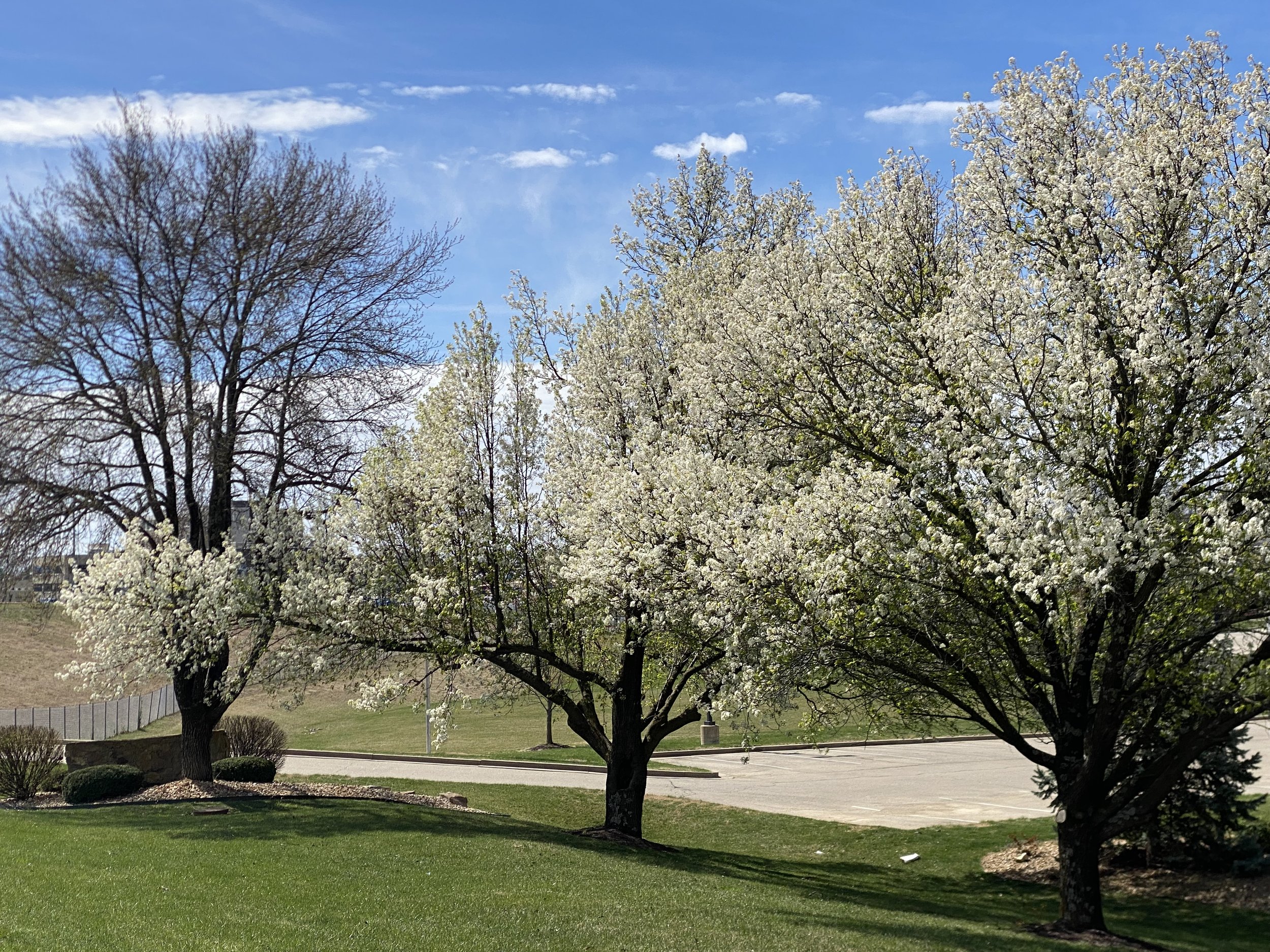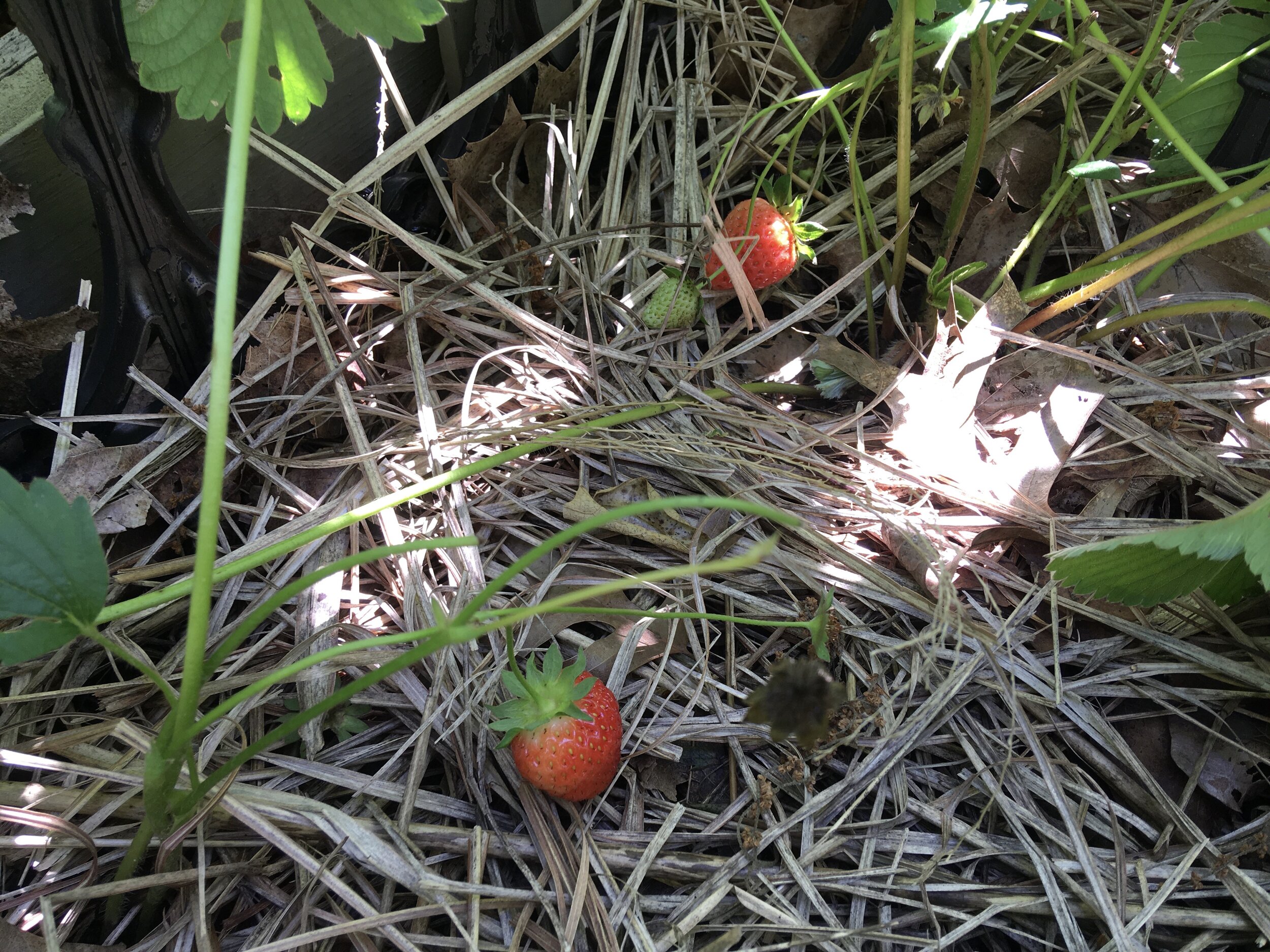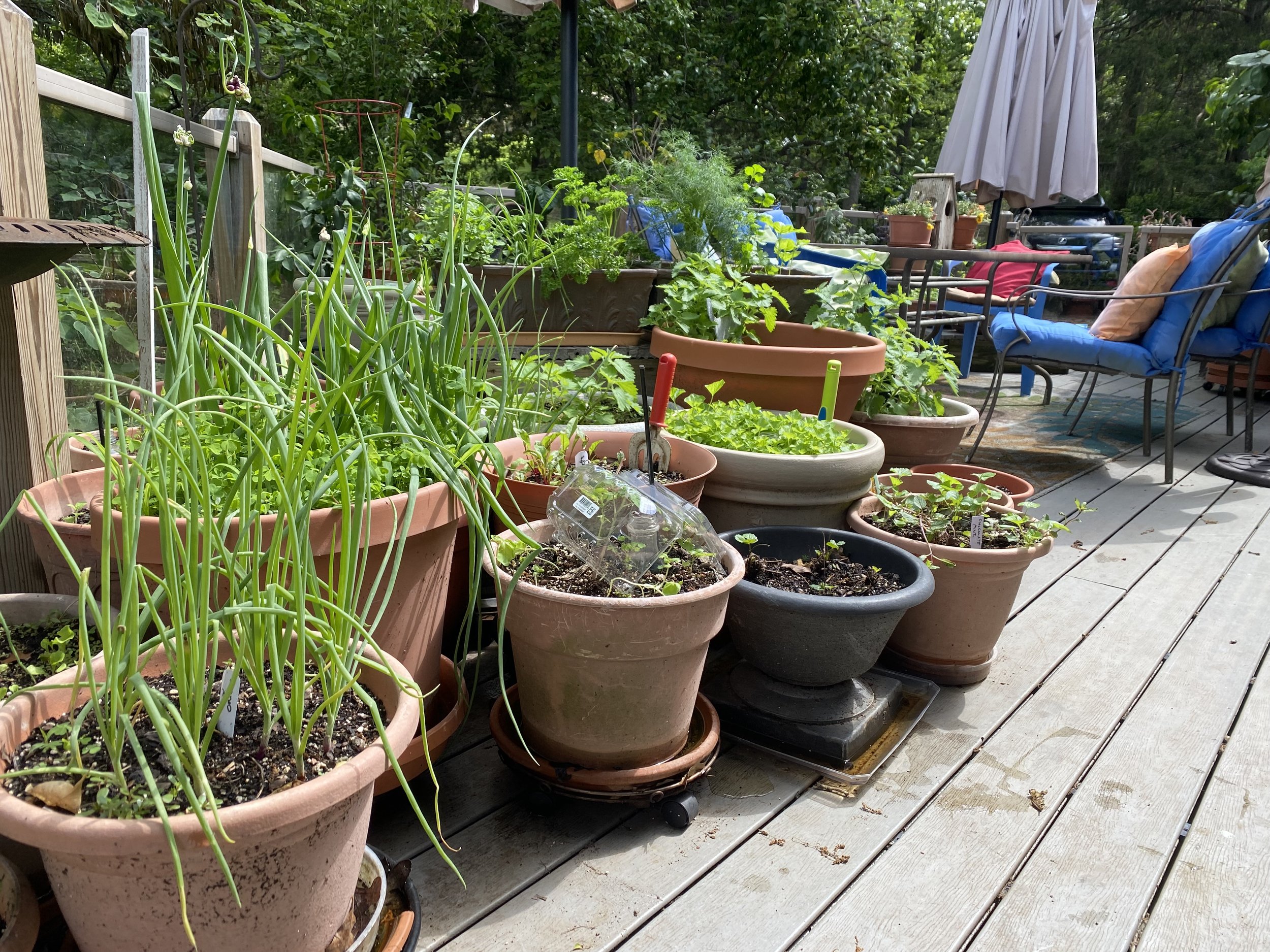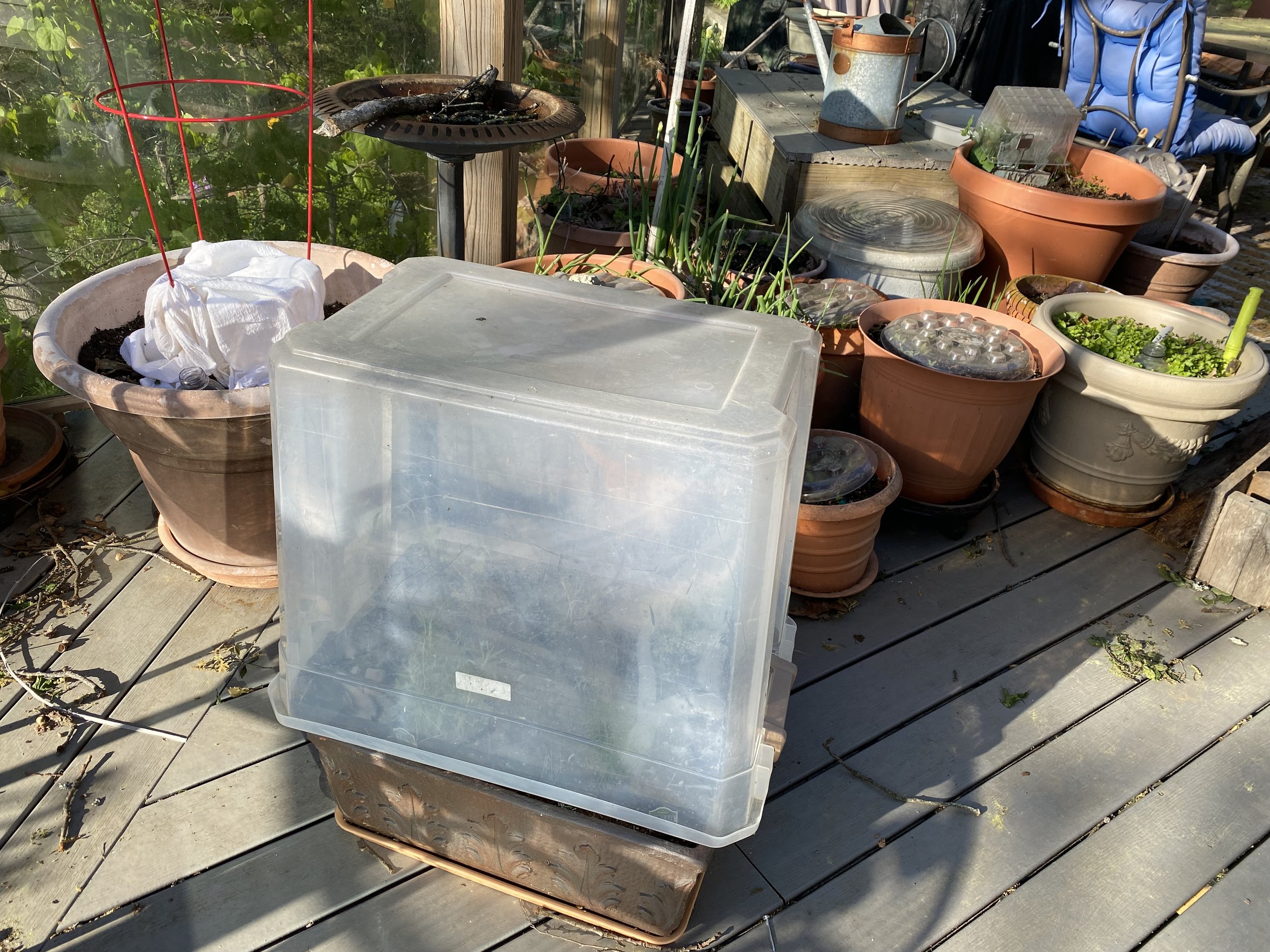Rain Barrels
/These steps off my basement now have a space for a rain barrel. (charlotte ekker wiggins photo)
Rain Barrels: Rain at Your Finger Tips!
Living on the down side of a hill means coming up with creative ways to keep water from pooling around my basement. Having totes and nearby ponds collecting water from my house gutters was one of the solutions. Now that my house siding has been replaced, after 5 years and two contractors, a story for another time - my handyman is finishing house details such as installing missing lights, railings and steps out of doorways. He also re-installed parts of the house guttering system and added rain barrels close to areas where I can easily access and use them. Indoor plants as well as an herb garden that grows outside my basement door will now have rain water accessible during the growing season instead of my having to drag a hose from the other side of the house.
If you haven't considered adding rain barrels to your property, here are some reasons to do so:
Plant Health Rainwater is typically free of the chemicals and salts found in treated tap water, making it better for plants and gardens. I can tell the difference between watering my plant with rain water and city water. Plants are healthier getting rain water.
Water Conservation Rain barrels help reduce the demand on municipal water supplies, particularly during dry seasons, by providing an alternative water source for gardening, lawn care, and other non-potable uses.
Cost Savings By using rainwater for irrigation, you can lower your water bill, especially in areas where water is expensive or usage is metered.
Emergency Water Supply In case of water shortages or restrictions, stored rainwater can serve as an emergency backup.
Environmentally Friendly Harvesting rainwater reduces stormwater runoff, which can carry pollutants into local waterways. This helps reduce the environmental impact on local rivers and streams.
If this is a new idea, do a little advance planning. Think through first where you want to place them and what size you will need, then go shopping.
Initial Cost. Setting up a rain barrel system will require an initial investment. There are complete systems available through garden centers. You can also find rain barrels on sale at garage sales, thrift stores and local home and garden centers at the end of the growing season.
Maintenance. They will also require regular maintenance to prevent debris buildup. I rarely have a problem with algae growth and mosquitos because I use the water quickly and I welcome frogs for natural pest control.
Limited Water. Most rain barrels hold 50-100 gallons so place them where you need small water amounts.
Water Overflow. During heavy rain, rain barrels can overflow, leading to potential flooding. Have them hooked into and out of the house guttering system to reduce water puddling. And you cadd an overflow hose that guides the water overflow away from the house and into a nearby flower bed and rain garden.
Do They Fit. Rain barrels can take up space and may not be visually appealing. Measure the available space and chose rain barrels that will fit the space and blend in. The rain barrels at the front of my house are green and nicely blend into the landscape.
Having rain barrels will be well worth the effort. Your plants, and frogs, will be happier and healthier!
For more gardening, beekeeping, cooking and easy home decor tips, subscribe to Garden Notes.
Charlotte

